Summer Heat , Cicadas and Cicada Killer Wasps At The Susquehanna Wetlands.
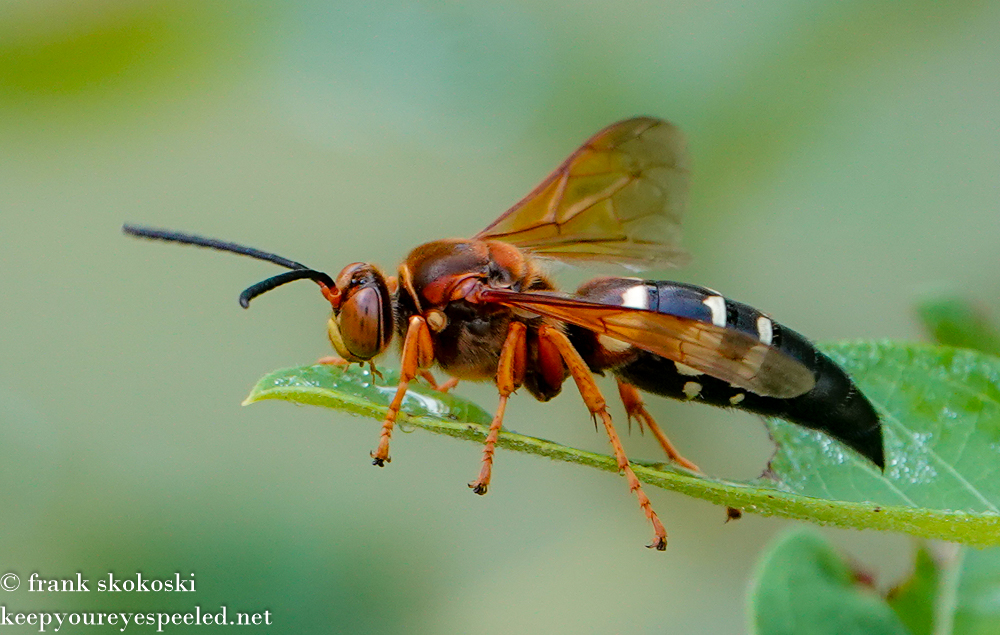
Summer is at it’s peak here in Northeastern Pennsylvania. And this year it has produced some mid-Summer heat. Temperatures reached 90 degrees this past week. As usual, I decided to make my weekly visit to the Susquehanna Wetlands and River Lands in Salem Township Luzerne County. I was still excited from my sighting of the bobcat here last week and hoped to see it again. We had some much needed thunderstorms overnight and a thick fog formed in the valley along the Susquehanna River. 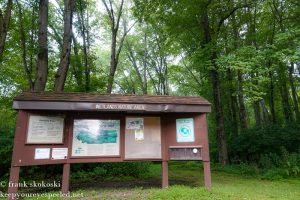
When I arrived at the wetlands I walked to the river and found the water lever to have dropped even lower since my last visit. There were still some fishermen in a boat on the river and I am guessing it may be easier to catch fish with these low water levels but I am not a fishermen and am not sure. 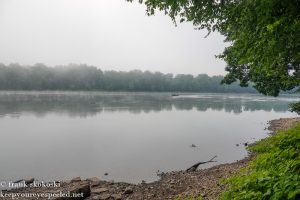
While at the river I noticed this large mushroom growing at the base of an old oak tree. I believe it is an old black-staining polypore.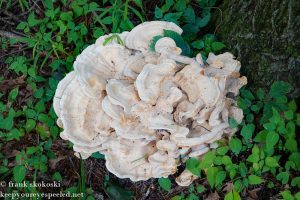
After observing the river I walked into the wetlands and found the vegetation still very green and lush despite the almost drought like conditions in our area. 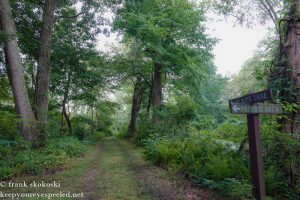
Walking on the trail along the ponds and remains of the old Susquehanna canal I saw about a dozen of wood ducks. They quickly flew away as I approached, except for this one. I thought it was a female wood duck. She stayed on this log long enough to get a photo. It was only later, when I got home and cropped and edited the photos, did I l see that is could be a fledging, that is, it just got it’s first coat of feather and is now capable of flying on it’s own,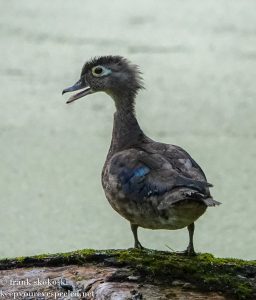
this would explain why I saw so many wood ducks in the wetlands. They were only able to swim with their parents until they developed these first feathers It also could have been an adult wood duck that was molting, that is losing it’s old feathers and growing new ones. I will leave this up to the wood duck experts Sadly, however, whether they are new fledging feathers, or feathers replaced in a molt, they will soon use them to migrate south in a few weeks. 
I continued my hike and saw a lot of green herons too. I think for the same reason as the wood ducks. The hatchling green herons were fledged and are now exploring the wetlands in search of their own food. 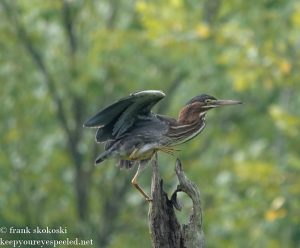
The grass in the wetlands was recently cut and some old trails reopened. I followed the newly opened trail to the Waterfowl pond. I often see wood ducks, herons and other water birds here. There were none on Saturday ,
,
There was, however, a northern flicker perched in a tree top, 
a song sparrow that was singing on a tree branch, 
and this gray catbird just hanging out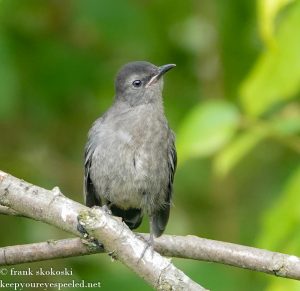 .
.
I left the water fowl pond and walked back toward the river lands. The ponds in the wetlands were now all covered with a thick green growth of duck weed. Duck weed is the smallest flowering plant and it is an important food source for many of the animals , retiles, amphibians, birds and even mammals living in the wetlands. 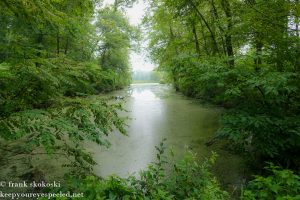
As I continued my hike I encountered this rabbit munching on the grass on the trail. I have been seeing a lot of rabbits on my last few hikes. I think their predators, mainly the hawks and eagles, have an abundant supply of other food, allowing the rabbits to do what they do best, breed.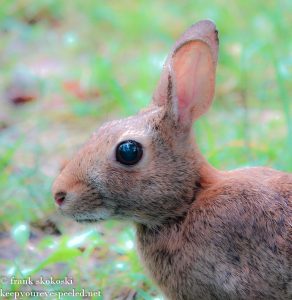
I walked back down to the river, to the branch that I saw the bald eagle, wood ducks and belted kingfisher a few weeks ago. There was still fog on the river and no wildlife this week. 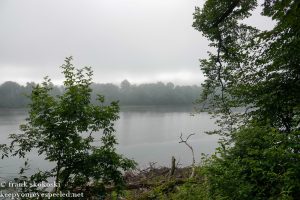
Walking back toward the river lands again I saw these mandrakes or May apples. The leaves are decaying. It seems like it was just yesterday I was delighted to see the new shoots appearing in April and heralding the coming of Spring. The warm months pass quickly here in Northeastern Pennsylvania. 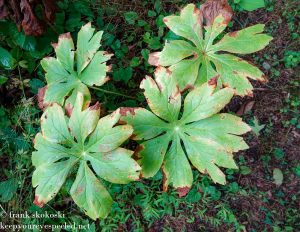
There were some Summer flowers blooming now, I saw some delicate jewelweed or touch-me-not flowers and this 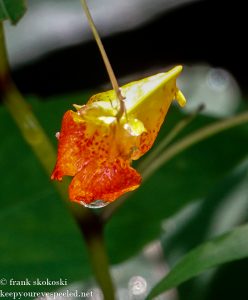
American germander flower along the trail. 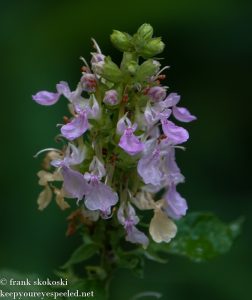
yellow toadflax. These flowers of mid-Summer remind me the days of Summer are nearing their peak. 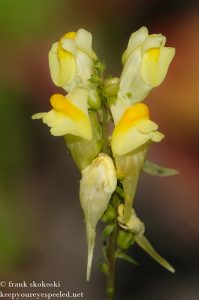
There were also some birds in the fields that were near the River Lands. I was surprised to look up and see this brown thrasher perched on a tree branch. 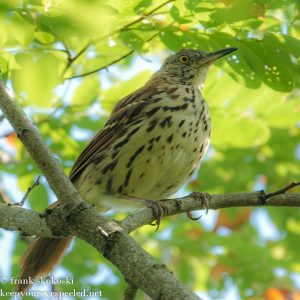
I don’ think I ever saw one here in the wetlands before. 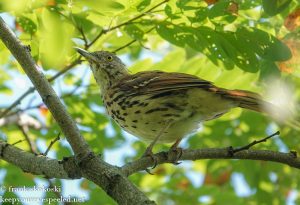
There were also some American goldfinches in the fields. I love seeing these pretty birds at the feeders in my backyard. 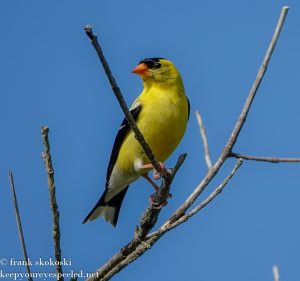
As I approached the river lands, the sun had burned off the fog, quickly heating up the morning air. Soon, the cicadas began to sing. I heard the first ones last week. I love hearing. They bring back many wonderful memories of my childhood Summers. They are also a reminder Summer is at it’s peak and shorter days and cooler weather will soon be here. 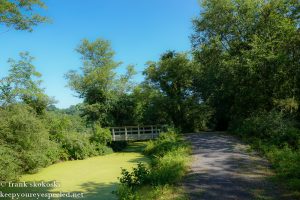
And, where there are cicadas there are cicada killer wasps. These large native wasps appear shortly after the emergence of the cicada. Cicada killer wasps are their primary predator. 
The cicada killer wasps capture the cicadas and take them to their underground nest. The cicada killer wasps lay their eggs on the live cicadas and the larvae feed on the cicadas when they hatch . Gruesome but this is the reality of Nature. The cicada killer wasps do sting but are very non-aggressive and rarely will sting a human. Over the years, have spent many hours sitting in a swarm of these large wasps, they would buzz all around me, and never got stung, yet. 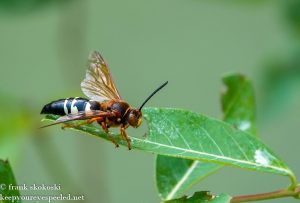
I encountered many of the cicada killer wasps as I walked on the trail between Lake-Took- A-While and the old Susquehanna Canal.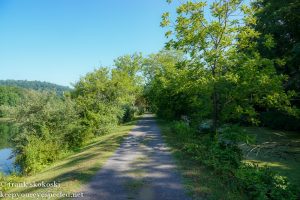
I also saw a few dragonflies along the shore of the lake. There aren’t as many as I have seen in past years. I am not sure why. 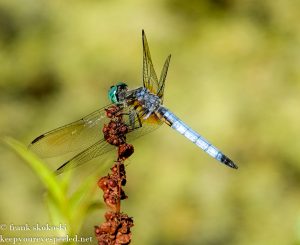
I heard a belted kingfisher chattering on the other side of the l the blue waters of the lake but I wasn’t able to get photos at that distance.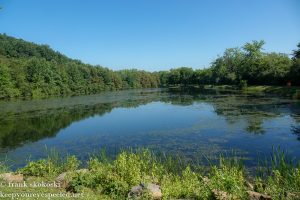
But , for the first time in a few weeks I saw these Canada geese swimming in unison on the lake.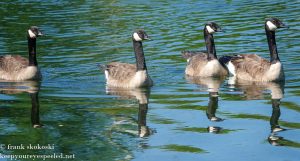
At the far end of the lake I also saw these two green herons. It was a recently fledge juvenile and one of it’s parents. 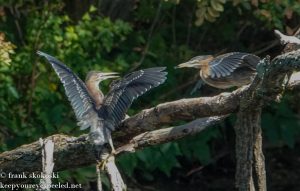
I just missed the parent feeding the young bird one of it’s last meals. Very soon it will have to find it’s own meals. 
The strong July sun raised the temperature into the mid 80’s when I began my hike back to the wetlands.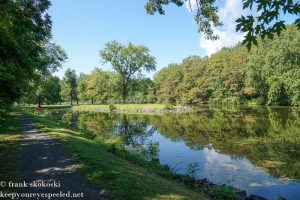
Along the way I saw this chipmunk braving the heat. I didn’t see much more wildlife activity in the river lands where there was no shade from the rays of the sun,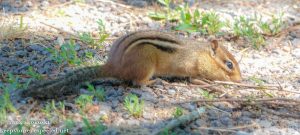
but when I entered the shaded trails in the wetland,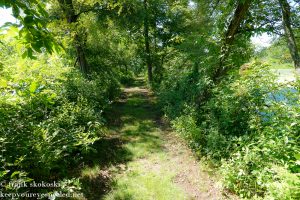
I saw a few more birds including this Carolina wren,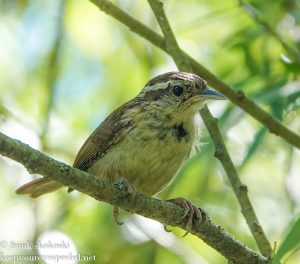
with it curved beak, it has one of the most beautiful songs of all the birds in the wetlands.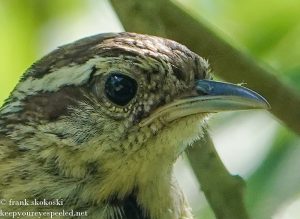
I also saw this tufted titmouse and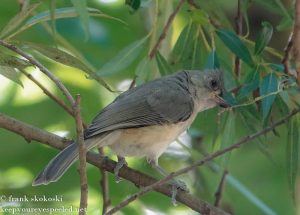
a great blue heron. I saw quite a few wood ducks but they quickly flew off before I could get any photos. Here is a link to a gallery with some more photos of the birds I saw on my hike. Susquehanna Wetlands birds July 23 2022. 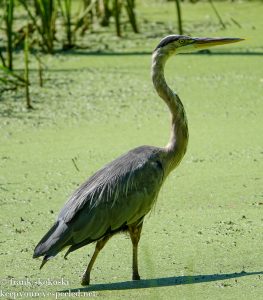
It was near noon as I was ending my hike in the shade of the ancient oaks in the wetlands. The sound of the cicadas serenaded me as I walked in the still lush and green vegetation. It was still hot and humid in the shade of the trees but I enjoyed it. It was like walking in a tropical rain forest. I love hiking in the wetlands. I didn’t see a bear, or bobcat or bald eagle but I enjoyed the beauty of the wildlife and wildflowers I saw on my five mile hike. And I am glad I was able to share it with my followers here on my blog. Here is a link to a gallery with some more photos of the cicada wasps, critters and wildflowers I saw on my hike. Susquehanna Wetlands July 23 2022. 
“I love summertime more than anything else in the world. That is the only thing that gets me through the winter, knowing that summer is going to be there.” — Jack McBrayer
Categories
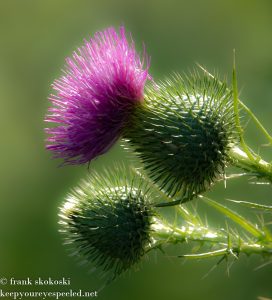
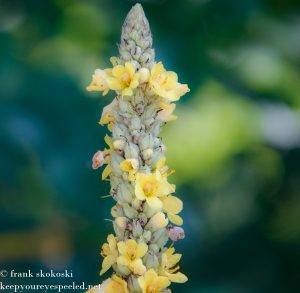
Recent Comments